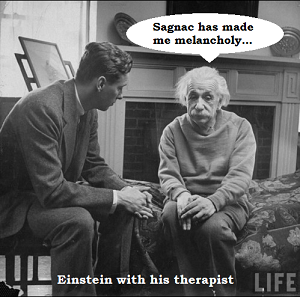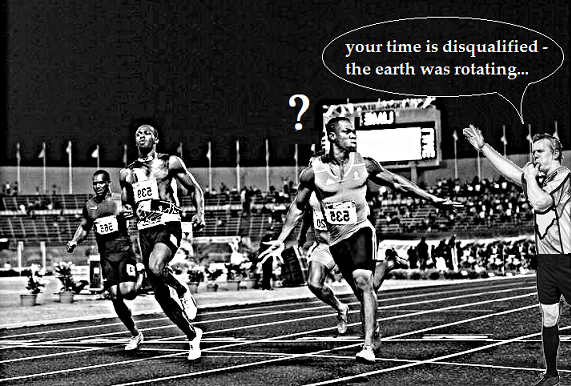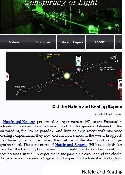Did the Hafele and Keating Experiment Prove Einstein Wrong?
Aus der Webseite Conspiracy of light:
Did the Hafele and Keating Experiment Prove Einstein Wrong?
V. Bobblehead Productions, 2013
Hafele and Keating performed an experiment in 1971 to test Einstein’s predictions regarding the dilation of time in clocks moved at some velocity with respect to a stationary clock. In the opening statement of the first of two papers on the subject, the authors refer to the debate surrounding the „twins paradox“ and how an experiment with macroscopic
clocks might provide an empirical resolution. In Hafele and Keating’s experiment, they flew cesium clocks around the world in opposite directions near the equator, and then measured how much time they have gained or lost when they return to the start point as compared to a stationary cesium clock to which they were originally synchronized. The experiment of Hafele and Keating (HK) actually differs from the twins paradox in some important ways – firstly, in the paradox, the traveling twin moves in a straight line to a distant point then turns around and comes back, with a series of accelerations and decelerations. In the HK experiment, the journey is circular and the clocks never leave the earth’s influence. In following a circular path, the HK experiment becomes a Sagnac effect experiment where it is clocks that are moving rather than beams of light. […]


.
- 24. August 2013
- Artikel

24. August 2013 um 11:50
Vielleicht haben sich die Konzepteure des HKE sogar von vornherein am Sagnac-Versuchsaufbau als Vorbild orientiert. Da die verwendeten Uhren auf Atomschwingungen beruhen, handelt es sich bei den beobachteten Unterschieden der Zeitdauer letztlich um Unterschiede der Frequenzen – was wiederum eine Analogie zu den Interferenzbildern nahelegt, wie Sagnac (übrigens Assistent der Curie) sie beobachtete.